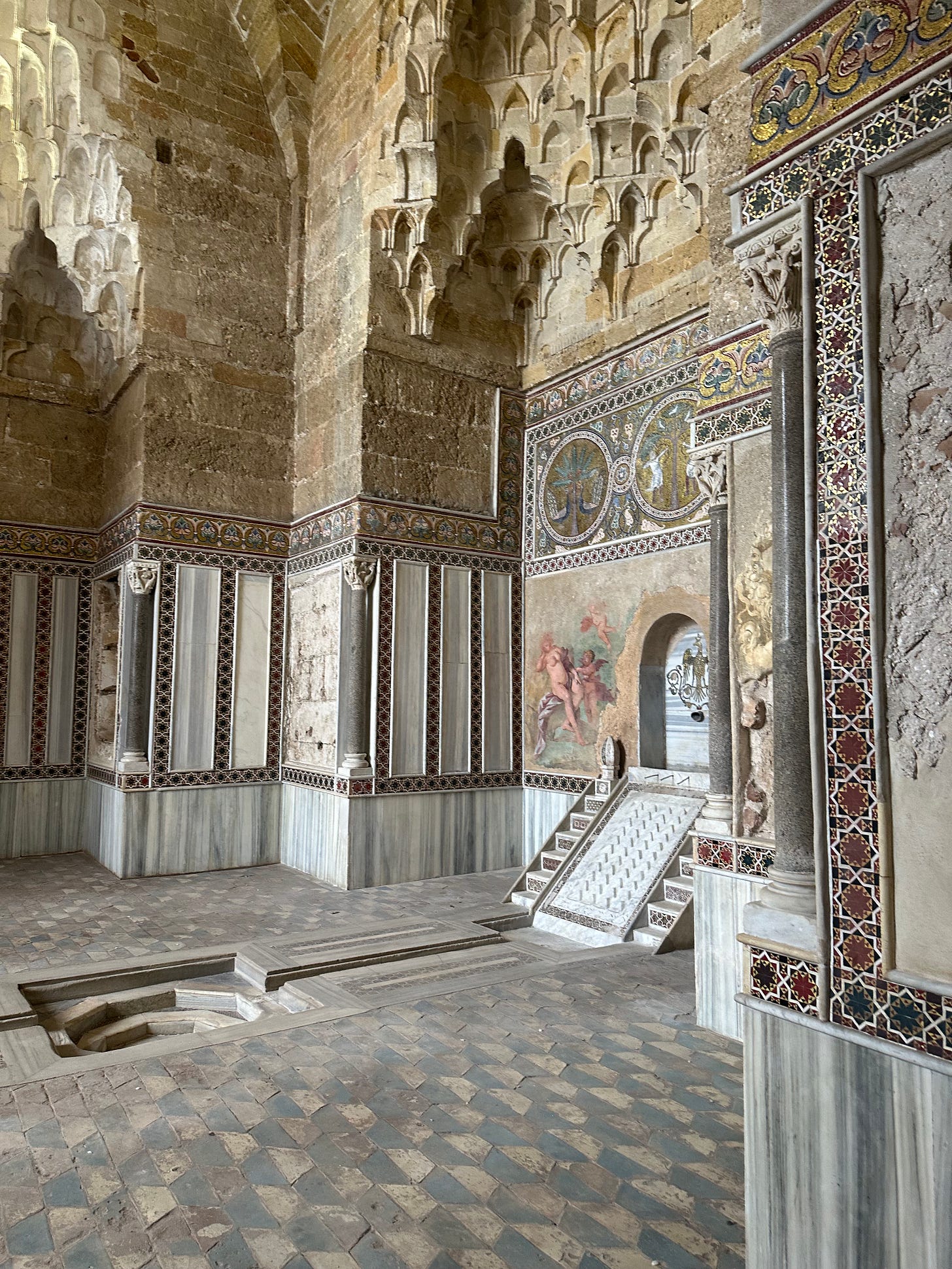I spent the last week showing delightful clients of the inestimable Bellini Travel around a selection of delights in Rome, Campania and Sicily. When approached about the trip some months ago by Emily FitzRoy over an aperitif in a Roman piazzetta, I made clear that straying from Rome took me rather away from my comfort zone. But she was insistent that a Roman theme would permeate the trip, and so it did. Of the umpteen threads linking Rome and Norman Palermo one of my favourites is found at a bijou hunting lodge now surrounded by a neighbourhood characterised by battered concrete and fairly extraordinary potholes. We were the only people there.
The Palazzo della Zisa takes its name from the Arabic “Al-Alziza”, the splendid. And splendid it is. Building began circa 1165 under William I (nicknamed The Bad), son of Sicily’s first Norman king Roger II. The Norman conquest of Palermo, ending two centuries of Arab rule had taken place almost a hundred years earlier but the Arab influence in Sicily remained strong. Roger’s admiral (from the Arabic emir al-bahr, ruler of the sea, which would be italianised to ammiraglio) George of Antioch was a Christian who spoke Arabic as his first language; Roger’s erudite court included the Arab geographer Muhammed al-Idrisi who wrote and compiled the Book of Roger.
Keep reading with a 7-day free trial
Subscribe to Understanding Rome's Newsletter to keep reading this post and get 7 days of free access to the full post archives.



